Slovenia - Europe's Hidden Gem
- Eleanor's Footsteps
- Jan 8, 2022
- 6 min read
Lublijana, Bled, Skocjan, Slovenia

Despite often being overlooked in favour of its famous neighbour Italy; the allure of crystal-like lakes, emerald forests and snow-frosted peaks should certainly make you sit up and take notice of Slovenia. Mediterranean waters wash up on just a small piece of coastline, yet they influence much of the culture and cuisine that Slovenia prides itself on. This is the diamond of hidden gems in Europe and should be added to any travel bucket list.
The old town of Ljubljana could easily be mistaken for a enchanted town, rather than the capital city. It is easy to forget about the metropolis of the modern world whilst navigating its traditional cobbles. The background laughter of paddleboarders upon the central Ljubljanica river ripples gently through the air, interrupted only by the ring of bicycle bells and coffee shop chatter. There is always something happening in the city, whether a music or arts festival, sports competition or artisan market; all of which are easily walkable.
To get the most from a shorter visit to the city, hire a bicycle. You can pick one up at many cycle shops, including the Tourism Office, for as little as €5 per day. Green space is not hard to come by in Slovenia, and riding north-west, away from the river, you will soon find the city’s largest garden, Tivoli Park. Its display of rainbow flowers, manicured lawns and forest trails are linked with wide, flat cycle lanes and pathways. At the top of the gardens is Tivoli Castle, a mansion holding the International Centre of Graphic Arts. There are a number of great places to stop for a coffee nearby including Caffe Bienale and Čolnarna Park Tivoli.
Legend has it that a monstrous dragon was defeated in Lublijana by Jason (and the Argonauts) on his mythical return to Greece. As time went on, the dragon became a symbol of protection in Ljubljana, often appearing on bridges, buildings, and even the national flag. There is even a Dragon Carnival held in the winter, with a large Shrovetide parade through the city and full programme of entertainment. No dragon hunt though is complete without a visit to Lublijana Castle (https://www.ljubljanskigrad.si/en/), which lies at the top of a hill in the middle of the city. There is a funicular railway up from the centre of town, but alternatively you can drive or take the leafy walk to the top. Entry costs €13, which includes Slovenian history exhibition and viewing tower, which are both well worth a visit. While at the top, take time to relax with a cold drink or even an ice cream from the cafe in the castle grounds. In the summer, deck chairs and bean bags are laid out here on the grass and it becomes a peaceful place to watch the world go by.
For something a little more quirky, head to the House of illusions (https://houseofillusions.si/en). This mind-boggling collection is perfect for both couples and families. It’s lively, fun and will guarantee to put a smile on your face. Make sure to check out the vertigo-inducing Vortex tunnel, where you can ‘walk’ in loop-the-loops! Just don’t forget your camera as you will definitely be snapping away in this Instagram paradise.
You cannot go wrong for food in Slovenia, which is heavily influenced by Italian flavours. Produce is fresh and wholesome, varying from Slovenia’s famous yet humble dumplings, all the way through to impressive world fusion dishes. Local wines from the Gorizia Hilla and Koper districts can be found across the country, easily competing against their Mediterranean counterparts. ‘As Aperitivo’ (http://www.asaperitivo.com), a smart, linen tableclothed restaurant serves some of the best cuts of meat in the area. For something more casual, stroll along the Ljubljanica river at dusk and take your pick from a number of riverside bars and restaurants.
Daytrip: Lake Bled
Ljubljana is just a gateway to this truly spectacular country. Step outside the capital and you will soon fall in love with Slovenia’s landscape. For many the first stop is one of Slovenia’s finest natural beauties, Lake Bled. The locals will have you believe that the lake was created by fairies, which when standing at the mystical water’s edge is almost believable. But the truth is that the land was the site of the Bohinj glacier during the last Ice Age, which melted to form this spectacular lake. Warm turquoise waters sparkle in the summer sun, reflecting the light up into the amphitheatre of evergreen fir trees that surround it.

Whether arriving by bus or by car, be prepared to get going early as this is a very popular place. Buses fill up quickly and so it is worth purchasing the open return (€12) ticket in advance online (https://novo.ap-ljubljana.si/en/) or at the bus station. You will need a printed copy of your ticket to board, so don’t rely on a copy on your phone! The journey should take approximately an hour, but be prepared for heavy traffic en-route. The first bus starts at 5am and then depart every 30-60 minutes from the main bus terminal in Ljubljana (normally bus stop 7). Queues can start from far outside Bled and so it is worth getting there early to beat the mid-morning rush. The buses will drop you at the main touristic area at the edge of the lake.
The island at the centre of the lake is actually part of a limestone hill that remained stuck out of the glacial meltwater. You can get to the island on a traditional pletna (flat bottomed) boats. If you are up for a bit more of a challenge, you can also rent wooden rowing boats from €10 per hour, and make your own way there. Once ashore, a mini paradise awaits of pale blossom and quaint buildings. Erected in 1142, the Church of the Mother of God on the Lake is the main attraction. Entrance costs €6 and inside you can ring the church bell yourself and wander around the charming grounds.
Keeping the family entertained is not difficult in Bled; amongst the hotels on the western shores there is also a toboggan run, skating rink and a swimming area. The Castle Bathing Area (https://www.kopalisce-bled.si/en) is found next to the rowing boat hire and costs €9 to enter. Once inside it has slides, pontoons and boards for you to play on in the lake, as well as changing rooms and a grassy bank to dry off and relax afterwards. The eastern side of the lake is much more peaceful, with hotels and campsites dotted sporadically around the waters edge. It doesn’t take long to get around though, you can walk around the whole lake (approximately 6km) in two hours.
While in the area, do not miss a visit to Bled Castle (https://www.blejski-grad.si/en/). There is a steep climb up the 130m hill at the edge of the lake, but don’t panic as there is also a regular mini bus that can take you to the top for a small fee, and a car park for those who wish to drive. The fairy tale castle is over one thousand years old, and between the charming courtyards, the castle houses exhibits on the eventful history of Bled. You can find out more using the free audio app available at the castle. The terrace of the castle cafe overlooks a jaw-dropping vista of the lake far below. Once finished, instead of taking the minibus back down after your visit, descend through Grajski Vrt Park on one of the steep winding forest trails. This brings you out at Grajska Plaža Restaurant…the perfect place for a refreshing post-walk drink!
Daytrip: Skocjan Caves
There are not many parts of the world where the country is just as breath-taking underground as it is above it. The Skocjan Caves (https://www.park-skocjanske-jame.si/en) are the only UNESCO world heritage site in Slovenia and considered to be a natural treasure of the planet. This is a great day trip, no matter the weather, and are only a fifty minutes drive to the south-east of Lubllijana.
Once at the entrance, you will find a ticket booth and cafe. Guided tours of the caves run hourly (you cannot visit unaccompanied) and are offered in English at certain times, so be sure to check when the next suitable tour starts. Tickets can be bought online or at the entrance for €22 (adults) and €10 (children). The tour starts by walking five minutes though the countryside, where you are guided towards the mouth of the underground chamber. Inside lies an alien landscape of towering stalagmites and majestic stalactites, winding 3.5 km into the rock. The deeper you get, the more impressive the caves become, eventually opening out into a chasmic world, and a raging underground river crashing over 140m beneath your feet. Sadly you aren't allowed to take photos in the caves, but you will certainly feel like a true explorer!
The caves can be joined with a trip to Trieste, across the Italian border. This Italian port town has some interesting architecture and some great little spots to grab a pizza in the docks.
Overall, there is so much to fill your time in Slovenia. Its adventurous nature combined with fairy book charm will leave any traveller spellbound. Make sure to add this hidden gem to your travel list soon!







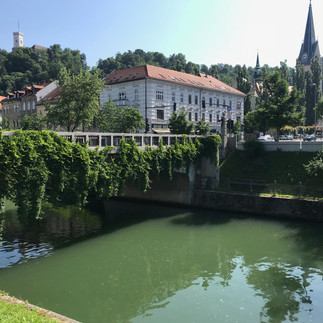

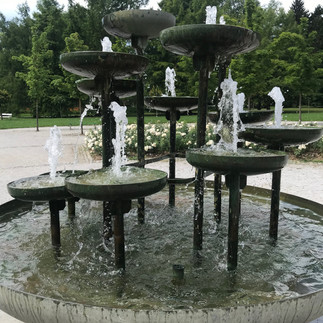







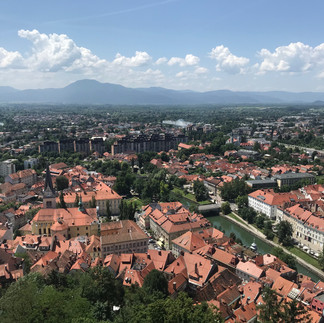
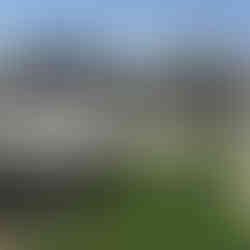


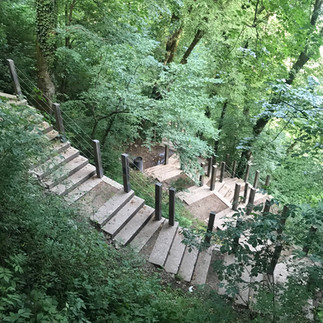






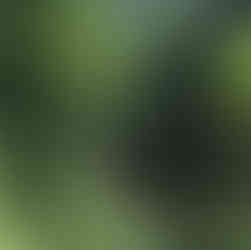



Comments